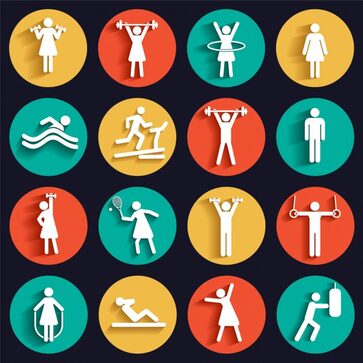 You may have heard the word Pilates floating around the health and fitness world in recent years, but what is Pilates and why is it all the rage right now? What is Pilates? Pilates is a form of exercise focused on the entire body and was developed by a man named Joseph Pilates. It was originally used to assist in rehabilitating injured soldiers from WW1 and then was used as strength and conditioning exercise for dancers. These days it is much more widely used by many individuals for many different purposes. Traditionally Pilates focuses on low-impact movements that target flexibility, muscular strength and endurance. Each exercise should be performed with precision, balance, correct postural alignment, core activation, and controlled flowing movements that incorporate breathing to centre the mind. Pilates movements can be completed in standing on laying positions and can also incorporate equipment such as the Reformer, Pilates Magic Circle, Chi Ball, Cadillac, Ladder Barrel and many others. It is very common these days for Pilates classes to be combined with other forms of exercise such as HIIT, Boxing or Yoga. What are the benefits? So, what’s all the obsession with Pilates over other forms of exercise? There are many benefits to Pilates when compared to other exercise methods, including;
What are the 5 key Pilate’s principals?
Now that you know what all the fuss is about, why not give a Pilates class a go! By Aleisha Michael Accredited Exercise Physiologist
0 Comments
 If you’ve ever tried to start a new exercise program you will know that there are many different types of physical activity out there. So how do you know which one will suit you best and bring the most benefit and enjoyment. To break it down simply (and let you in on our best kept secret), the best type of physical activity is, the only you’re actually going to engage in regularly! If you are trying to complete an activity that you hate doing on a regular basis, the likelihood that you will continue this long term is very slim. Alternatively, if you have a form of physical activity that you are passionate and excited about that brings you joy, we are much more likely to keep participating long term. But how do you find which activity gets you pumped to jump out of bed in the morning? There can be a few different things to take into consideration, for example; do you prefer indoor or outdoor activities? To spend time by yourself or with other people in social situations? What time frame do you have available to complete physical activity? Having a think about each of these things can help form a picture about what type of physical activity may suit you best! Finding your style When first starting out it can be a good idea to think about what types of physical activity you have enjoyed most in the past and what type of personality traits you possess. Some things to consider include;
Setting goals When trying to find which type of activity is going to suit best it is important to think about your health, fitness and wellness goals and why you are wanting to start a regular physical activity program. This will help in both, learning which types of physical activity are going to best help you achieve your goals and reminding you throughout your program why it is important for you to continue. A few examples to help you get started are;
Top tips:
By Aleisha Michael Accredited Exercise Physiologist |
AuthorSLisa Parkinson Archives
July 2024
Categories
All
|

 RSS Feed
RSS Feed